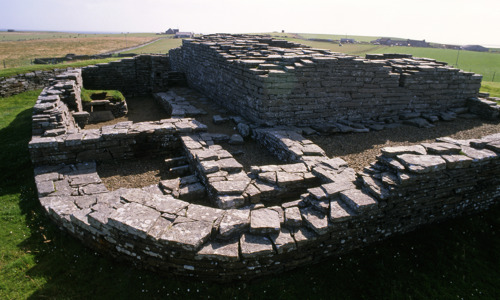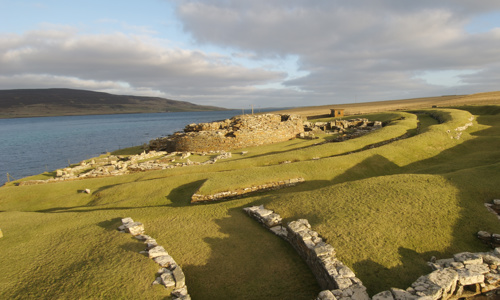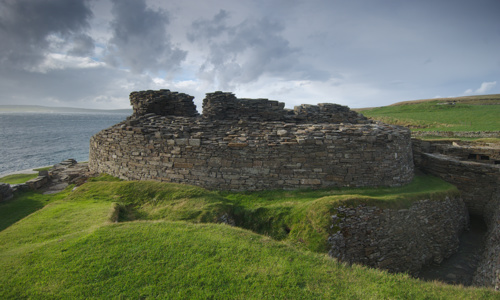History
According to the sagas, Earl Magnus travelled to Egilsay in about 1116 to confront a rival earl, Hakon, about who should have control of Orkney. The meeting didn’t go well: it ended in the murder of Magnus.
Bishop William of Orkney recognised Magnus’ sanctity 20 years later, in 1136, and made him a saint. St Magnus Church was likely built soon after that, on the spot where Magnus’ murder is said to have taken place.
A remarkable sight
The ruin today is, after St Magnus Cathedral in Kirkwall, the finest surviving Norse church in Scotland, testimony to the wealth and authority of Orkney’s Norse rulers. It stands remarkably complete in three parts:
- a chancel to the east
- a central nave
- the distinctive round tower to the west
The tower was originally at least 4m taller than it is today, and comprised five floors. Its design has architectural parallels in north Germany and around the North Sea, demonstrating the far-flung contacts of the Orkney earldom.
The church’s chancel housed the altar. Above the altar was a room that probably served as a treasury and sacristy. The nave, where islanders and pilgrims stood or knelt during services, was covered by a high-pitched roof.

















